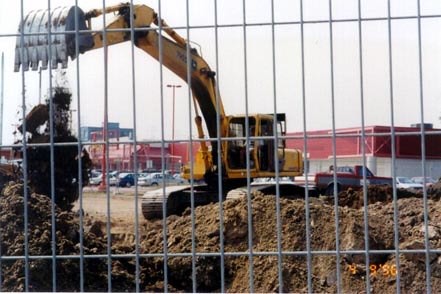
When considering fencing for security purposes, many companies and individuals turn to metal fencing. High chain link fences or aluminum fencing can provide enough security to deter a casual trespasser. Some will go so far as to add barbed wire or maybe even electric fences - however, there can be serious liability issues with this type of security fencing, even with proper warnings.
If you want added security with your fences, you might consider two types of fencing that do more than a tall chain link or aluminum gate and are not as dangerous as some of the other choices.
Adding a welded wire or mini-mesh fence will make it a security feature that prevents someone from easily climbing or cutting the material to gain access.
Here are some more details from the
American Fence Association website:
"When higher security is required mini-mesh and welded wire are just some of the options to consider for fencing materials.
It's simple: the thicker the metal wire or tighter the weave, the more difficult it is to climb and the more time consuming it is to cut.
Mini-mesh is a very heavy duty, tightly woven chain-link fence that has no toe holds for climbing, can't be easily crawled under, and the weave is too small for bolt cutters.
Thicker gauge pipe should be used as end posts, line posts and top rail to support the added weight of mini-mesh or even heavier fence fabrics.
A variety of heavy-duty vertical picket steel fences are available in the industry using
welded wire technology to eliminate toe and hand holds. Typically using a high grade 8 gauge wire on 1/2" centers, welded wire is available in 7' to 10' wide panels with up to 12' and even 15' vertical pickets. Pickets are welded to horizontal crossbars to create panels that are then hot dip galvanized to cover all the welds and prevent rust and corrosion. Installation often uses a square or I-beam steel post for 6' to 8' panels using a no access bolting system.
To penetrate a welded wire panel requires far more than bolt cutters. To cut an opening large enough for a person to get through in a welded wire fence would take an incredibly long time - allowing security personnel or other assets to identify the potential penetration and to dispatch security personnel."
The Association goes on to point ou that these types of fences are available in a variety of colors and finishes that can make the security fence more attractive and less distracting. If you've spent any money on landscaping or if you have fickle neighbors, you can find security fencing that has function
and form.
If you need to
find a local security fence installer, you can post your residential or commercial job with Construction Deal. We'll match you with a
fencing company in your area, for free, and you can receive as many bids as you want. This will save you time and money!







